Regional wars - we need assault guns
The use in regional conflicts of the main forces designed for classic-type wars that have excessive ranges unnecessary in these operations, and at the same time, large masses that impede their quick delivery to the place of operation, is extremely irrational. A typical example of such irrational use of military equipment was the use in Chechnya on a fairly wide scale of the 152-mm self-propelled howitzer 2S19 Msta-S. This complex and expensive weapon of the classical war is designed to destroy tactical nuclear weapons, artillery and mortar batteries, tanks and other armored equipment of the enemy, i.e., targets that are actually absent in a regional conflict such as Chechen.
The gun has a mass of 42 t, 24700 m firing range, a circular rotation tower protected by splinter armor from firing enemy long-range artillery, numerous equipment, including a filtering unit, built-in dozer equipment, underwater driving equipment, etc. The use of as field artillery tanks. The use of heavy equipment of the main forces is associated with huge costs, but even with these costs due to low mobility it will not provide the necessary level of fire support.
The way out is well known. It consists in the mass equipment of infantry (motorized rifle) units of mobile own artillery, capable of moving with the infantry and provide it with direct support. For this purpose, a well-thought-out system of towed and self-propelled artillery weapons, specially designed for use in regional conflicts, is needed. In this system, all types should be rationally used. weapons (classic guns, mortars, MLRS, recoilless guns), but the emphasis should be placed on guns of the classical type. Their advantage over mortars is, on the one hand, a greater degree of universality, i.e., conducting both mounted and flat shooting, including direct fire, on the other, in large angles of horizontal shelling.
Wall shooting in the context of regional conflicts plays a significantly larger role than in wars of the classical type. This is explained, on the one hand, by a large proportion of operations in populated areas, where shooting at targets with vertical projection (buildings, bridges, tunnel entrances, etc.) plays an important role, and on the other hand, the possibility of wide use of fragmentation shells with axial streams of ready damaging elements (shrapnel and frag-beam shells). In the future, it seems appropriate to use the generalized term "assault gun", which is understood to be an instrument that is part of infantry units, which has a small firing range and a powerful projectile action.
Recoilless guns with a very large gain in the mass of guns have significant drawbacks - low accuracy of fire and increased danger for the calculation.
The artillery equipment of infantry units in the units of the company-battalion-regiment, in addition to a sharp reduction in the need for direct fire contact with the enemy at the level of small arms and related losses, will significantly reduce the fire reaction time. Fighting in regional conflicts develops in the absence of a clearly marked front line, often in mountainous or inaccessible terrain and in populated areas, under conditions of operation of small maneuverable enemy groups and with significant fire and tactical independence of subunits. Under the conditions of an acute shortage of time, divisional-battery organization of artillery firing from closed positions at infantry requests, taking into account the time required to complete the requests and the inevitable errors in the transfer of information, impedes the efficient conduct of fleeting fire operations. Errors in target designation in the experience of the Vietnamese and Middle Eastern Wars have repeatedly led to significant losses from the fire of their own artillery.
The problem of infantry (regimental, battalion, "assault") artillery has a long history. To some extent, this story is the struggle with the weight of the guns. Tsarist Russia did not have regimental and battalion artillery. The experience of maneuvering civil war operations revealed an urgent need for light and mobile infantry weapons. Therefore, the first gun created in Soviet times was the 76-mm regimental cannon arr. 1927, developed and put into production by the Putilov factory. With a barrel length of 16,5 calibers and a projectile weight of 6,2 kg, the gun had an initial speed of 380 m / s, the maximum firing range was 6700 m. The mass of the gun in combat position reached 900 kg and by that time it was considered too large for an infantry escort weapon. Therefore, all new systems of pre-war artillery weapons (1929-1932 gg., 1933-1937 gg., 1938 gg.) Provided for the development of light regimental and battalion guns (table 1).
None of these systems was implemented. An exception was the 76-mm BOD battalion mortar, which had excellent characteristics (firing range 5 km with the mass of the 148 kg system), but it was also quickly removed from service. At present, it is difficult to establish the causes of the erroneous policy of the GAU in infantry artillery. It is possible that a long-lasting passion for the recoilless guns of Kurchevsky, as well as an unjustified opposition of infantry weapons that were rapidly developing at that time to the infantry, played a certain role.
As a result, the army approached the beginning of the Great Patriotic War without battalion artillery, and the regimental artillery was armed only with an excessively heavy cannon arr. 1927 of the year (weight 900 kg). At the same time, the Germans had a massive 75-mm “18” regimental cannon (5,45 kg mass of the projectile, initial speed 221 m / s, firing range 3550 m) with an excellent mass characteristic 400 kg.
In the course of the war, due to the acute need of the troops, an attempt was made to create a lightweight regimental gun by imposing a barrel 76-mm cannon arr. 1927 on the gun carriage 45-mm anti-tank gun arr. 1942 with the initial velocity of the projectile 262 m / s, firing range 4200 m and weight 600 kg. The gun was not very successful. Compared with the gun arr. 1927 g. Its muzzle energy decreased by more than two times, and its mass by only 20%. The 600 kg mass was too large for an assault gun designed to accompany the infantry with fire and wheels. Nevertheless, the gun was widely used in the war. In total, more than 5000 guns were manufactured. During the war, the design bureau of plant No. 172 designed a lighter regimental cannon with a mass of 440 kg and a range of 4500 m, but it did not go into series. Disadvantages guns arr. 1943 r. Especially prominently appear when comparing its characteristics with the 75-mm mountain howitzer USA М1А1 characteristics
With the same mass, the howitzer М1А1 exceeded the gun mod. 1943 more than doubled by muzzle energy and firing range. Note that the 75-mm howitzer МХNUMXА1 was one of the most common guns of the Second World War. She understood the 1 parts, which made it possible to parachute and drop off by pack transport. The howitzer, in particular, was widely used in the mountainous regions of Italy and on the hard-to-reach Pacific Islands.
In the postwar period, the development of domestic infantry guns was completely stopped. The main role in this was played by the erroneous policy towards the artillery of the country's top leadership in the person of N. S. Khrushchev. During this period, the United States and its allies during the Vietnamese campaign were convinced that the role of artillery in regional conflicts had not diminished, but, on the contrary, increased. Similar conclusions were made on the basis of the Arab-Israeli wars. It was during the Vietnamese war that took place in the jungle, including during the rainy period, in the absence of roads and bridges, that the need for the property of a helicopter carrying vehicle was realized.
One of the most striking artillery developments of this period was the United States 105-mm howitzer МХNUMX, adopted by the 102 year. The carriage of this gun is made of welded aluminum alloys. For the manufacture of liners and all sorts of coatings in the design of howitzers used plastics.
The howitzer had a powerful muzzle brake, which absorbs 55 ... 60% recoil energy, progressive cutting of the barrel (35 / 18) and a support plate that is disconnected from the course and allows circular shelling. The transfer of the howitzer was made by a CH-47 helicopter. The howitzer had good characteristics: initial speed 610 m / s with a mass of projectile 13 kg, muzzle energy 2,42 MJ, specific energy 1,67 kJ / kg, mass in the combat position 1450 kg, however, already during the Vietnamese campaign opinions began to be expressed that, as a weapon of direct support for small infantry units (up to the squad - platoon), the M15000 howitzer is excessive in range, heavy in weight and ineffective in the action of a projectile. It was noted that in the course of hostilities up to 102,% of fire missions were solved at a distance of less than 90 km. 10-high-explosive fragmentation projectiles had insufficient fragmentation and compression effects, especially with the non-instantaneous action of impact fuses when firing on swamp soils. Created during the campaign, 105-mm M105 cassette containing 413 fragmentation fighting elements M18 with explosive charge 35 g was also not effective enough. The howitzer could not be transported by light helicopters with a carrying capacity on an external sling up to 28 tons. The delivery of howitzers on the trailer of army utility trucks and jeeps was not ensured, especially in bad road conditions.
In Russia, infantry fire support weapons were developed mainly as self-propelled guns. Among them are 73-mm gun "Thunder" set on the combat vehicle BMP-1 infantry, 100-mm gun 2A70 installed on BMP-3, 120-mm self-propelled gun 2S9 "Nona-S" on the track base and 2S23 " Nona-SVK "on the wheelbase. A distinctive feature of the last two guns, developed by TsNIITochMash, is the use of projectiles with ready-made cuts on the leading belt of the projectile.
The 100-mm gun 2-70 is of considerable interest as the basis for the development of a towed assault gun for the platoon link. Until now, the 100-mm 3UOX17 shot developed by THEM was in service. In this shot, the 3ОF32 projectile, previously developed for the BS-3 towed cannon and the SU-100 self-propelled cannon, having a thick-walled C-60 steel body, a low filling ratio and, as a result, a low fragmentation effect, was used. Currently, the Tula KBP has developed a new 100-mm ZUOF19 shot with an increased firing range and fragmentation effect.
The estimation of the minimum mass of the towed assault gun depending on the caliber using the criterion of the maximum allowable amount of acceleration of the retractable parts of the gun is presented in table 3. It also presents the calculated firing range with the initial velocity of the projectile 300 m / s, the relative mass of the projectile 10 kg / dm3 and the form factor 1,25.
The only lightweight towed domestic system developed over the past decade is the 120-mm 2B16 Nona-K gun. The gun developed by TsNIITochMash has the maximum firing range of 8800 m, the mass of the RP of the 17,3 projectile, the initial speed of the 367 m / s, the rate of fire of the 8 rds / min. According to estimates table. The 3 mass of the 120-mm assault gun should not exceed 600 kg, while the mass of the 2B16 gun is 1200 kg, i.e., twice the specified standard. By reducing the mass of the gun to 600 kg, it will become promising as an assault armament of company-battalion unit.
These two calibers 100 and 120-mm are not sufficient to solve all the fire problems of regional conflicts, taking into account the peculiarities of the hostilities in them. These actions occur in the absence of a clearly marked front line, often in mountainous or inaccessible terrain and in populated areas, under conditions of operation of small maneuver groups of the enemy, and with considerable fire and tactical independence of the units. A maneuverable group with light weapons, after detecting and starting shelling, is able to leave the position in a matter of minutes. Under these conditions, the requirement of defeating a group target with two or three shots is put in the forefront, which is possible only with a significant increase in the mass of the explosive charge. At the same time, the radius of the circle of compression damage must exceed the doubled circular error of shooting. This condition is satisfied only when the mass of the explosive charge is greater than 10 kg, i.e., with a caliber larger than 150-mm. Another solution is to use cluster shells, but, as calculations show, highly effective cluster shells can be successfully implemented only in large caliber.
The possibility of creating a helicopter-transportable large-caliber infantry guns of the regimental link is quite real. Even in the pre-war period, the artillery armament system on 1933-1937, approved by the PBC of the USSR 5.08.33, introduced the 152-mm mortar "NM" into the arsenal of infantry regiments arr. 1931, developed by Rhinemetal. Mortar had a mass of 1150 kg, barrel length 9,3 caliber, initial speed 250 m / s, maximum range 5285 m. The RP-5221 missile with a full mass of 38,21 kg had a mass of explosive charge 7,62 kg, i.e. 0,20 filling factor. On 1 November 1936, the Red Army was armed with 100 mortars.
Unfortunately, an ill-conceived decision led to the removal of this system from service. At the same time, the Germans, its counterpart 15, see SIG33, showed itself perfectly during the war. Over 20 thousands of these guns in towed and self-propelled versions were produced.
At the present level of artillery science and technology, the creation of an 152-mm assault gun with a mass less than 900 kg and a firing range of up to 5 km is quite real. Reducing the mass of the gun can be achieved through the use of new powders with an optimal law of combustion, high-strength crack-resistant steels for the manufacture of barrels, titanium and aluminum alloys for the manufacture of gunholes, reducing the mass of the projectile and other measures.
The optimum RP of the assault gun projectile will have a mass of 34 ... 38 kg with a mass of explosive 10 ... 12 kg. The specified reduction in the mass of the projectile in relation to the staff (43,6 kg) is useful:
- not only compression, but also fragmentation of the projectile increases;
- increases portable ammunition, and, consequently, increases the autonomy of the system;
- saving of metal, including alloying;
- decreases the cost of delivery of ammunition in the conflict zone;
- reduced physical load calculation.
The increase in the fragmentation of the projectile with a decrease in the known limits of its mass and a simultaneous increase in the mass of the explosive charge, that is, with an increase in the filling ratio of the projectile, is justified theoretically and experimentally. The theoretical value of the optimal filling ratio is 0,25 ... 0,30, that is, it significantly exceeds the filling ratio of standard ammunition. For example, for 152-mm projectile 3ОФ25 “Vulture” it is 0,156 (mass of projectile 43,56 kg, mass of explosive charge 6,8 kg). Typical examples of thin-walled projectiles with a high filling ratio are the English 155-mm OF the LHNUMXA15 howitzer FH-1 and the domestic 70-mm high-explosive 203-F-53 projectile (the filling factors are 625 and 0,26, respectively).
The problems of ensuring the strength of a thin-walled shell shell when fired with an overload of more than 20000 are categorized as solvable. A more difficult task is to ensure strength when firing at solid obstacles (semi-rocky and frozen soils, brick walls, etc.). The solution to this problem, on the one hand, is connected with the use of high-quality steels with high strength and reliability, on the other hand, with the use of computer simulation of the projectile deformation process during implementation and the transition to new criteria for evaluating the projectile strength. An important role in solving the problem will be played by improving the accuracy of manufacturing the body, first of all, reducing the difference in thickness, which will require a reduction in the accepted standards on the durability of the pressing tool. One of the most serious dangers of the destruction of the hull when fired due to compression of the hull under the leading chord at the time of cutting it into the rifling of the barrel can be eliminated by using ready-made protrusions on the leading chord. An example of such a design is the 120-mm OB of the 3BOX49 projectile of the Nona family.
The low level of barrel loads of assault guns will allow the use of new high-strength steels for the manufacture of shells, as well as the use of measures for predetermined crushing of shells and the use of ready-made destructive elements, including those made of heavy alloys.
The presence of large resources in terms of durability of shell corps is confirmed by foreign experience in designing cluster bombs with self-targeting combat elements, the casing walls of which are smaller in 3-4 times than the walls of conventional artillery shells.
Reducing the mass of the projectile as a factor in the physical load of the calculation is of particular relevance with a limited number of calculations and a lack of time. At present, the 152-mm 3VOX32 shot has a mass of 86 kg, which is at the limit of the physical capacity of a small calculation with fast loading. For an assault gun, it is quite realistic to reduce the mass of the shot from 59,7 kg to 50 kg, which will allow increasing the ammunition load by 20%.
In ammunition 152-mm regimental assault gun along with the usual PF shell appropriate to include PF projectile with proximity fuse of the "altimeter" cluster munitions (conventional and remote mining) betonoboynymi, thermobaric, cumulative active-reactive, shrapnel, high-Beam and high precision. In the latter case, a reduced level of barrel overloads will allow the construction of electronic control units of the projectile on an inexpensive element base.
The use of high-precision and cluster projectiles in regional conflicts requires separate consideration. With high effectiveness of high-precision projectiles (PTS) and their ability to carry out selective (“point”) impact on the target, their high cost is an obstacle to widespread use. According to Jane International Defense Review estimates, the cost of a tank ammunition from 30 125-mm BTS is equal to the cost of the tank itself.
Efficiency free cassette cassettes occupy an intermediate position between conventional PF monoblock shells and military-technical cooperation, in many cases approaching the latter. An idea of the characteristics and capabilities of modern cluster artillery shells can be obtained by the example of the 155-mm M483-1 projectile, which was successfully used during the Gulf War. The projectile has a mass of 46,5 kg and contains 88 cumulative fragmentation combat elements М42 with a mass of 182 g each. The use of cassette shells of this type allows three shots to create an affected field area 6000 m 2. An important role in regional conflicts will be played by cluster remote-mining shells that disperse anti-personnel mines on the ground and allow you to instantly put minefields on the ways of approach and withdrawal of enemy mobile groups.
For motorized rifle subunits, the use of self-propelled assault guns built on the standard wheelbase of the BTR-80 armored personnel carrier seems very promising. In this case, subject to the exclusion of 30-mm automatic gun 2А72 with ammunition and part of the assault, it is possible to place an 152-mm gun with 20 rounds of ammunition (total weight 1500 kg).
The approximate weapon system by assault guns of the company regimental link of the motorized rifle division is presented in table. 4.
Computer simulation of typical operations of regional conflicts (defense of roadblocks, artillery escort of columns, operations in populated areas, etc.) showed that the use of infantry artillery sharply changes the whole picture of the operation. For example, modeling of a firefight of two groups armed with small arms, one of which has two artillery pieces, as a random process with discrete states, showed that a group armed with artillery wins the battle by numerically outweighing the enemy in 3-4 times.
Similar estimates for the criterion of "Cost-effectiveness" were carried out for assault artillery and tactical aviation. The cost of delivering 1 kg of ammunition to the target was taken as one of the main criteria. Calculations showed that for aviation this figure is 4 ... 5 times higher than the same value for assault artillery. This is due to the high cost of fuel (for a Su-25 attack aircraft, consumption is 2 tons per hour), amortization of expensive aircraft, the removal of airfields from the combat zone, significant combat losses of aircraft (up to 1% of the number of sorties), etc.
As the troops become saturated with assault guns, the role of long-range artillery in regional conflicts will gradually decrease. Long-range guns will remain mainly in the system of strong points ("forts"), capable of providing fire overlap of large territories. For example, a battery MNSX-B 152-x howitzer guns with a well-functioning reconnaissance and target designation system can keep under control an area of 4 square. km Another important task of long-range artillery is the shelling of remote areas of great length. Estimates show that with a rational distribution of functions between assault and long-range artillery, the relative number of long-range guns should be within 2000-15%, which will reduce the cost of artillery support by 20-30%.
The decisive factor in the success of the use of assault artillery in regional conflicts is the use of its most valuable quality — mobility, primarily helicopter transport. Maximum loads on the external sling of artillery transport helicopters Mi-24P, Mi-25, Mi-35 are 2500 kg, military transport helicopters Mi-8Т and Mi-8МТ - respectively 3000 and 4000 kg, ship-based transport helicopter KA 29 - 3000 kg. Thus, the most massive domestic transport and combat helicopter Mi-24 is capable of transporting on an external sling a kit including 152-mm gun to 1 tons and a container with ammunition (15 shots) of the same mass, which ensures the destruction of the detected mobile enemy groups of 20-30 in less than an hour. It is not excluded that, in view of the limited number of army aviation, the requirement for the transportation of assault guns will be presented to new purely combat helicopters Ka-1, Ka-50, Mi-52Н. In principle, this is ensured by the carrying capacity of these helicopters. For example, for the Ka-28 “Black Shark” helicopter, the total mass of weapons on the underwing holders is 50 tons. In the future, the set of "helicopter-assault gun" can acquire the status of an independent combat unit, that is, be considered as a new autonomous weapon with its tactics of combat use.
The organizational aspects of equipping infantry units with assault guns will include the introduction to the states of artillery officers, the training of soldiers in artillery specialties, the introduction of services for the supply and transportation of ammunition, and the organization of repair units. The organic entry of assault artillery into the everyday life and combat practice of a company, battalion and regiment will undoubtedly be associated with overcoming a number of established stereotypes, including the change in tactical norms.
In conclusion, we dwell on the economic side of the issue. The estimated cost of an 152-mm assault gun in small-scale production will be 80-100 thousand dollars, in large-scale production - 40 ... 50 thousand dollars (which is approximately equal to the cost of two high-precision projectiles). According to approximate estimates, the total needs of the Armed Forces, border and internal troops are respectively 500, 300 and 200 guns. Thus, the solution of the largest military-technical problem, which is essentially a national priority, will require the total cost of 50 million dollars, which is commensurate with the cost of one modern combat aircraft. We can safely say that according to the “Cost-effectiveness” criterion it is difficult to find an example of a more rational investment in the country's defense.
In conclusion, we note that the use of the term "assault gun" in this article, with the aim of identifying guns capable of operating in infantry combat formations, is justified and necessary. The terms “light”, “ultralight”, “regimental” guns in this case do not reflect the essence of the problem. For example, the domestic 152-mm regimental howitzer 2А16 and its export version 155-mm howitzer M-389 developed by the State Unitary Enterprise Plant # XXUMX belong to the class of light howitzers, although they have a 9 kg mass. 4300-mm howitzer UFH British company VSEL with a mass of 155 kg in the terminology of the company is ultra-light (UFH - Ultralight Field Howitzer). In this case, it is emphasized that these “light” howitzers have a significantly smaller mass compared to conventional field howitzers, such as USA M3630 (198 t), FH-7,2 (70 t), WAC9,3 China (21 t), 9,5А2 “Msta B »RF (65 t) and others.
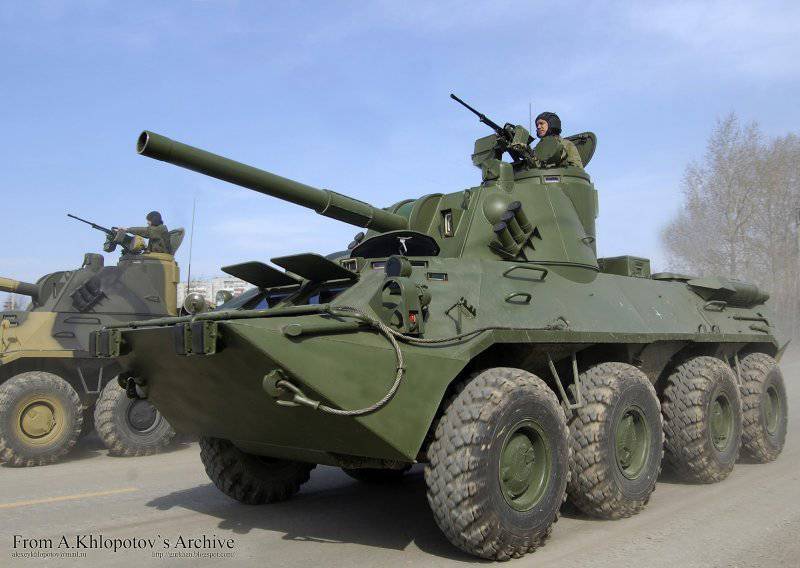
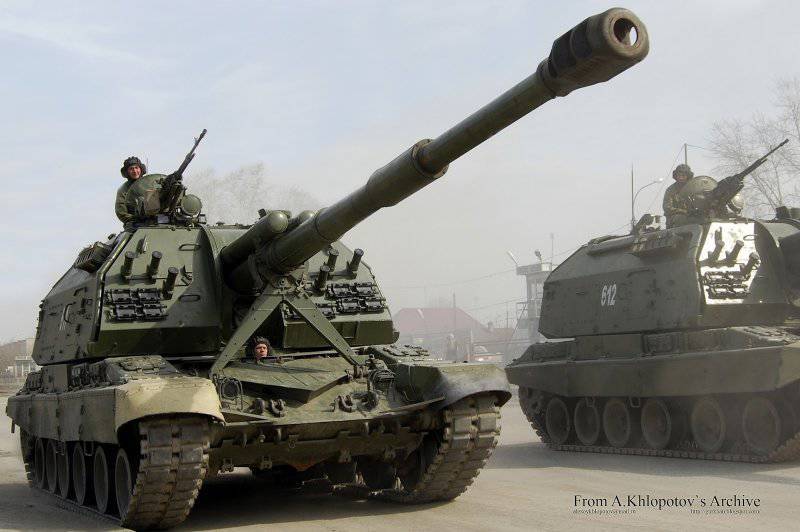
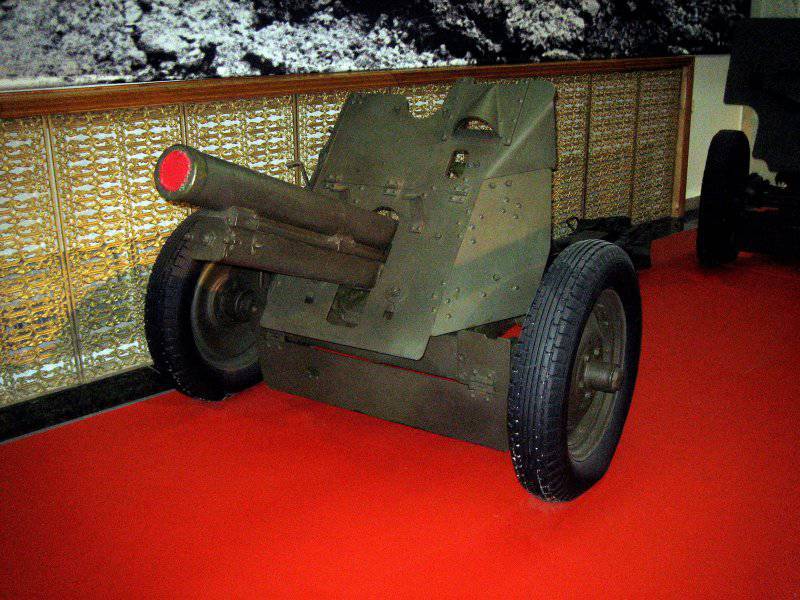
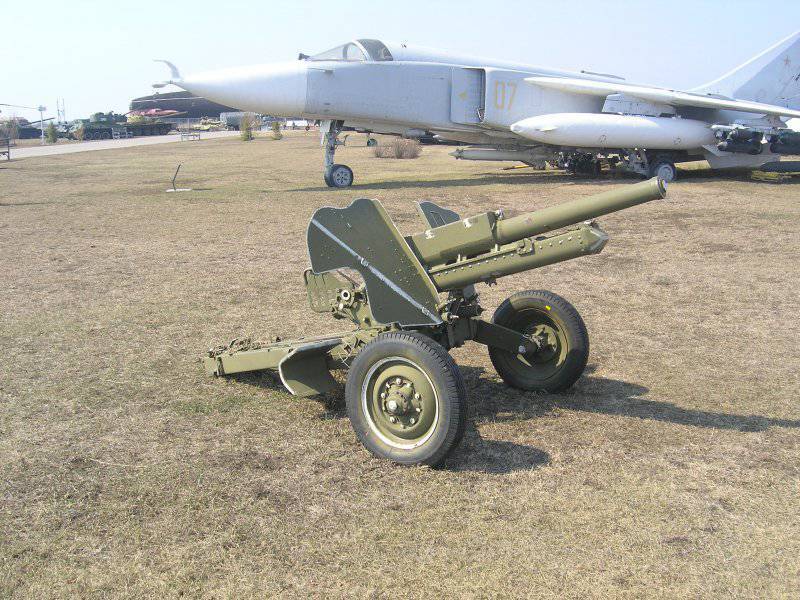
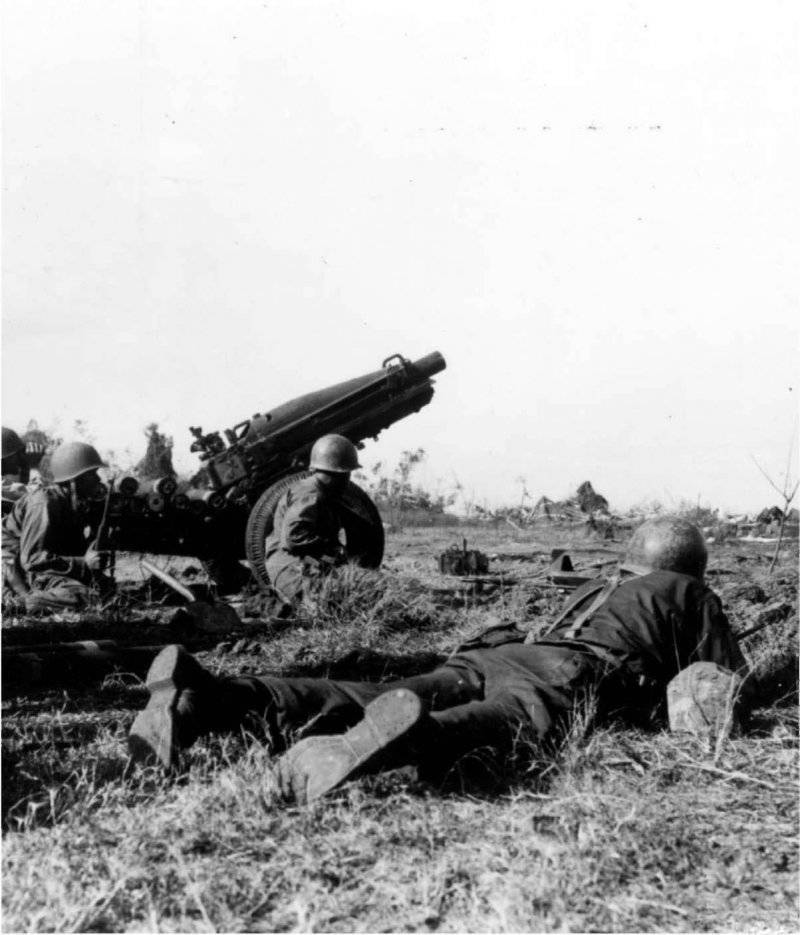
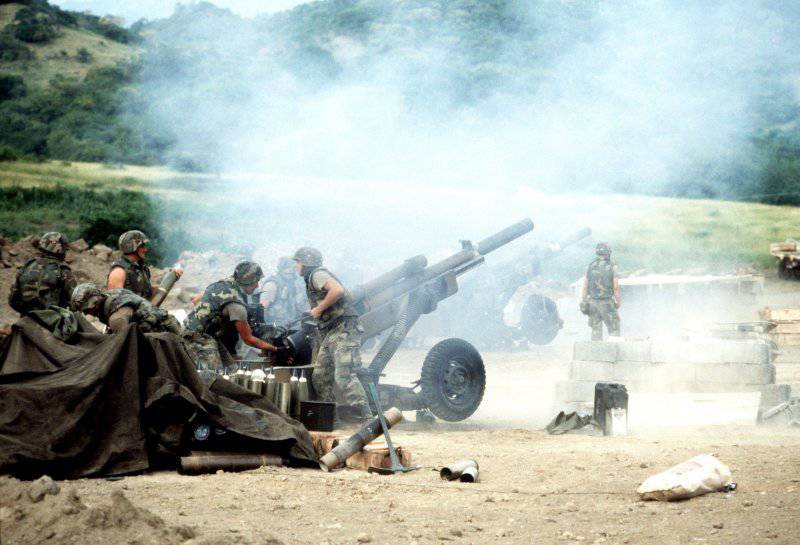
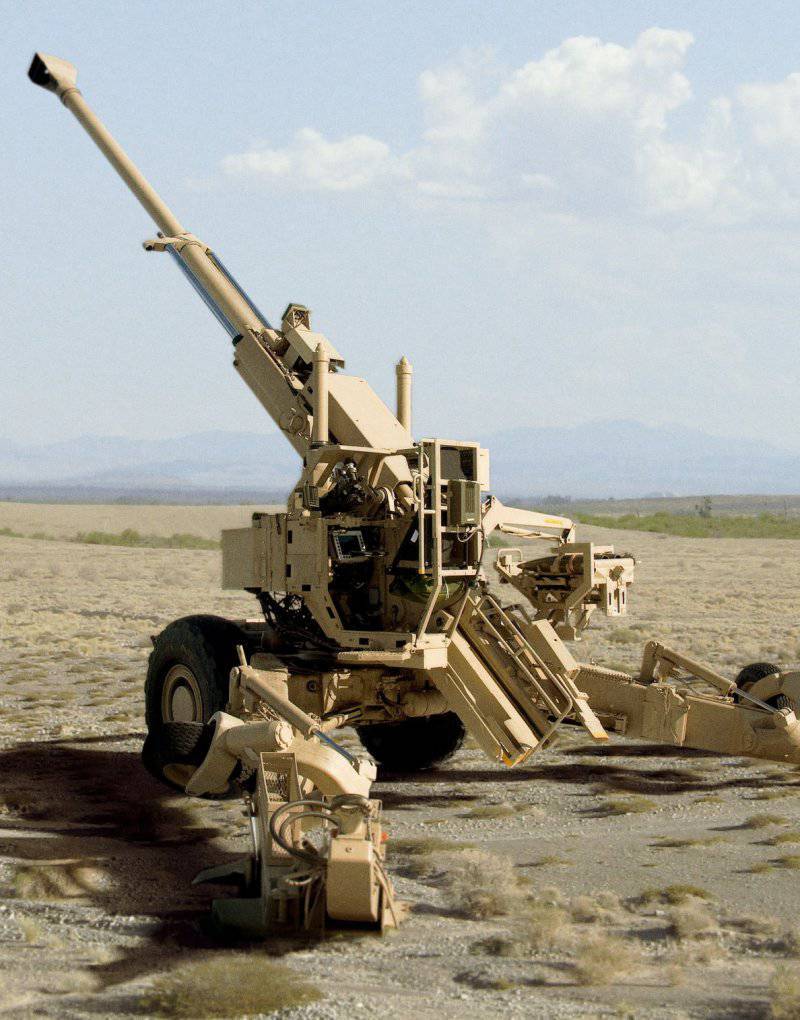
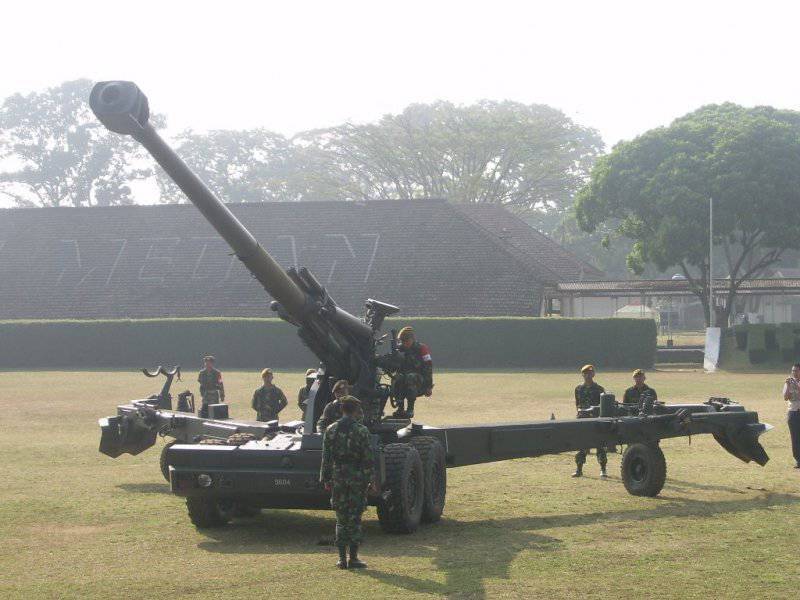
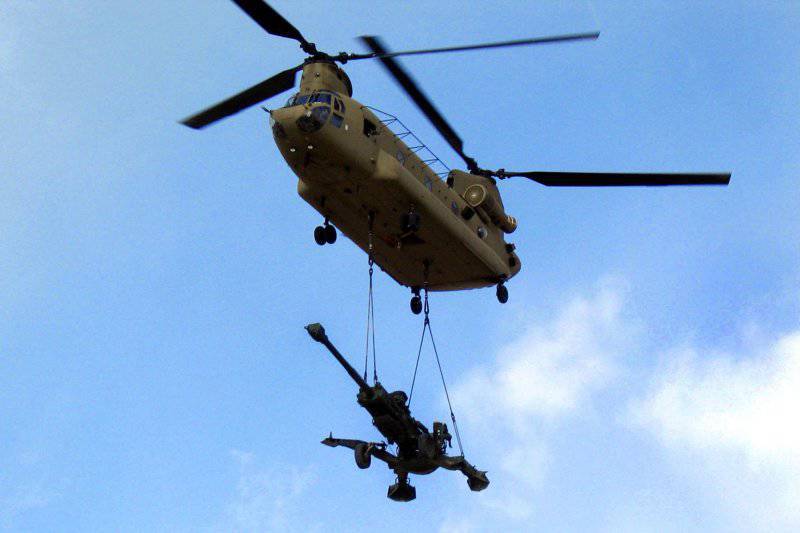
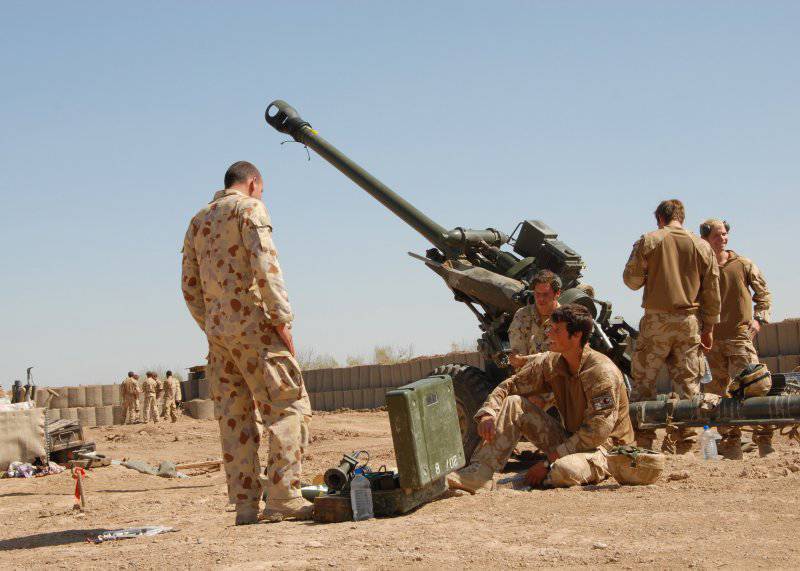
Information